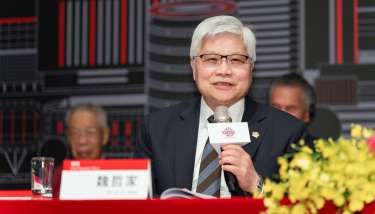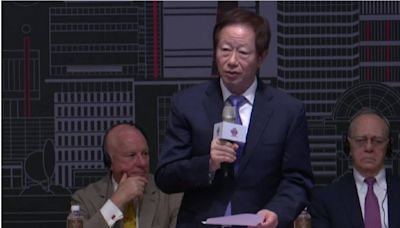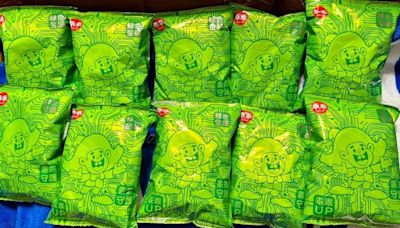搜尋結果
- 839.00-7.00 (-0.83%)2024/06/05 03:18 臺灣股市 將在 5 小時 42 分鐘 期間開市 (報價延遲20分鐘)。
- 昨收846.00開盤844.00委買價838.00委賣價839.00
- 今日價格區間837.00 - 851.0052週價格區間516.00 - 878.00成交量29335 張平均成交量39017 張
- 市值21939.850 億本益比 (最近12個月)25.19營運報告/法說會日期2024-07-18除權除息日2024-06-13
相關股票
TSMC was founded in Taiwan in 1987 by Morris Chang as the world's first dedicated semiconductor foundry. It has long been the leading company in its field. [15] [16] When Chang retired in 2018, after 31 years of TSMC leadership, Mark Liu became chairman and C. C. Wei became Chief Executive.
The YES stroke alphabetical order, also called YES stroke-order sorting, briefly YES order or YES sorting, is a Chinese character sorting method based on a stroke alphabet and stroke orders. It is a simplified stroke-based sorting method free of stroke counting and grouping. [1] [2] [3] YES order has been applied to the indexing of Xinhua ...
- Nomenclature
- History
- Methodology
- Distribution
- In Education
- Use with Computers
- Criticism
- Further Reading
- External Links
In Chinese, simplified characters are referred to by their official name 简化字; jiǎnhuàzì, or colloquially as 简体字; jiǎntǐzìⓘ. The latter term refers broadly to all character variants featuring simplifications of character form or structure,[note 1]a practice which has always been present as a part of the Chinese writing system. The official name tend...
Background
According to Chinese palaeographer Qiu Xigui, the broadest trend in the evolution of Chinese characters over their history has been simplification, both in graphical shape (字形; zìxíng), the "external appearances of individual graphs", and in graphical form (字体; 字體; zìtǐ), "overall changes in the distinguishing features of graphic[al] shape and calligraphic style, [...] in most cases refer[ring] to rather obvious and rather substantial changes". The initiatives following the founding of the Qi...
Late Qing literature and Republican-era reform
Though most closely associated with the People's Republic, the idea of a mass simplification of character forms first gained traction in China during the early 20th century. In 1909, the educator and linguist Lufei Kui formally proposed the use of simplified characters in education for the first time. Over the following years—marked by the 1911 Xinhai Revolution that toppled the Qing dynasty, followed by growing social and political discontent that further erupted into the 1919 May Fourth Mov...
First round of simplification
Work throughout the 1950s resulted in the 1956 promulgation of the Chinese Character Simplification Scheme, a draft of 515 simplified characters and 54 simplified components, whose simplifications would be present in most compound characters. Over the following decade, the Script Reform Committee deliberated on characters in the 1956 scheme, collecting public input regarding the recognizability of variants, and often approving forms in small batches. Parallel to simplification, there were als...
Structural simplification of characters
1. All characters simplified this way are enumerated in Charts 1 and 2 of the 1986 Complete List of Simplified Characters[zh] (hereafter the Complete List). 2. Chart 1 lists all 350 characters that are used by themselves, and can never serve as 'simplified character components'. 3. Chart 2 lists 132 characters that are used by themselves as well as utilized as simplified character components to further derive other simplified characters. Chart 2 also lists 14 'components' or 'radicals' that c...
Derivation based on simplified character components
1. Chart 3 lists 1,753 characters which are simplified based on the same simplification principles used for character components and radicals in Chart 2. This list is non-exhaustive, so if a character is not already found in Charts 1–3, but can be simplified in accordance with Chart 2, the character should be simplified.
Elimination of variants of the same character
1. Series One Organization List of Variant Characters[zh] accounts for some of the orthography differences in mainland China versus in Hong Kong and Taiwan. These are not simplifications of character structures, but rather reduction in number of total standard characters. For each set of variant characters that share the identical pronunciation and meaning, one character (usually the simplest in form) is elevated to the standard character set, and the rest are obsoleted. After rounds of revis...
The People's Republic of China and Singapore generally use simplified characters. They appear very sparingly in texts originating in Hong Kong, Macau, Taiwan, and overseas Chinese communities, although they are becoming more prevalent as mainland China becomes more integrated globally. Conversely, the mainland is seeing an increase in the use of tr...
In general, schools in mainland China, Malaysia and Singapore use simplified characters exclusively, while schools in Hong Kong, Macau, and Taiwan use traditional characters exclusively. Today, simplified Chinese characters predominate among college and university programs teaching Chinese as a foreign language outside of China,such as those in the...
In computer text applications, the GB encoding schememost often renders simplified Chinese characters, while Big5 most often renders traditional characters. Although neither encoding has an explicit connection with a specific character set, the lack of a one-to-one mapping between the simplified and traditional sets established a de facto linkage. ...
There are ongoing disputes among users of Chinese characters related to the introduction of simplified Chinese characters.[quantify] Author Liu Shahe was an outspoken critic of the simplification of Chinese characters. He wrote a dedicated column entitled "Simplified Characters are Unreasonable" in the Chinese edition of the Financial Times.
Bergman, Peter M. (1980). The Basic English-Chinese, Chinese-English Dictionary: Using Simplified Characters (with an Appendix Containing the Original Complex Characters) Transliterated in Accordan...Chen, Huoping (1987). Simplified Chinese Characters. Torrance, CA: Heian. ISBN 0-89346-293-4.Andrew West, Proposal to Encode Obsolete Simplified Chinese CharactersThis is a list of semiconductor fabrication plants.A semiconductor fabrication plant is where integrated circuits (ICs), also known as microchips, are manufactured.They are either operated by Integrated Device Manufacturers (IDMs) who design and manufacture ICs in-house and may also manufacture designs from design-only (fabless firms), or by pure play foundries who manufacture designs from ...
Information and communications technology ( ICT) is an extensional term for information technology (IT) that stresses the role of unified communications [1] and the integration of telecommunications ( telephone lines and wireless signals) and computers, as well as necessary enterprise software, middleware, storage and audiovisual, that enable ...
Hokkien is a Southern Min language spoken in southern Fujian and Taiwan.It has one of the most diverse phoneme inventories among Sinitic languages.Along with other Min languages, which are not directly descended from Middle Chinese, Hokkien is of considerable interest to historical linguists for reconstructing Old Chinese. ...



